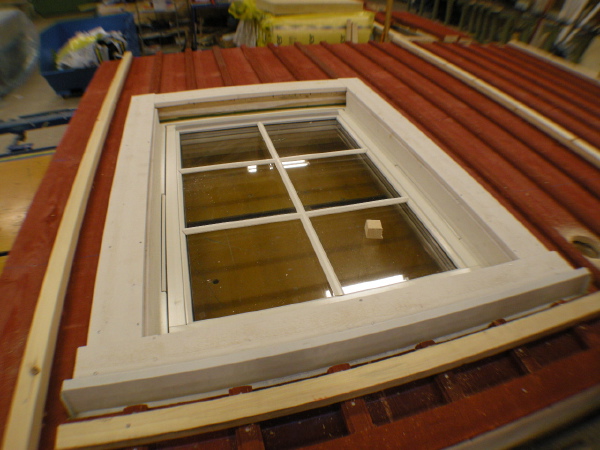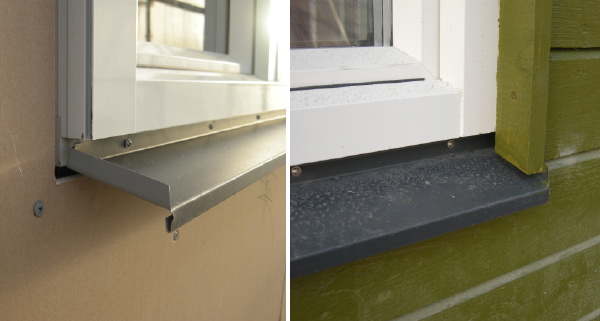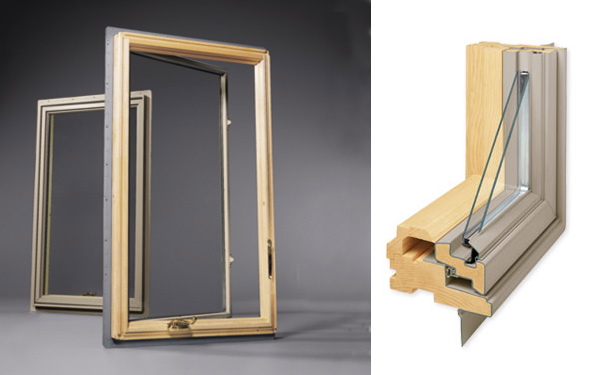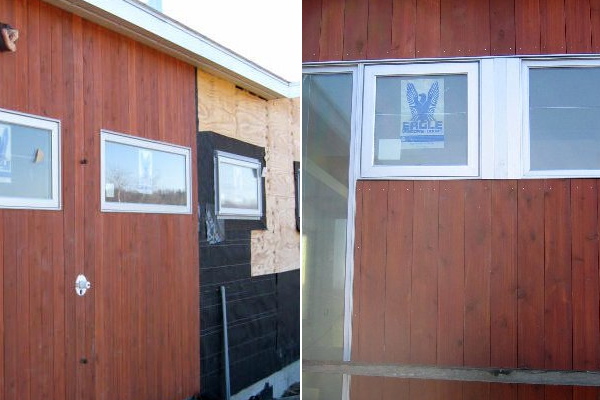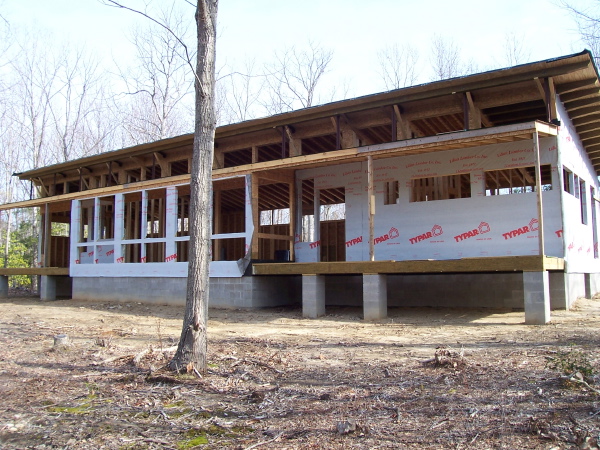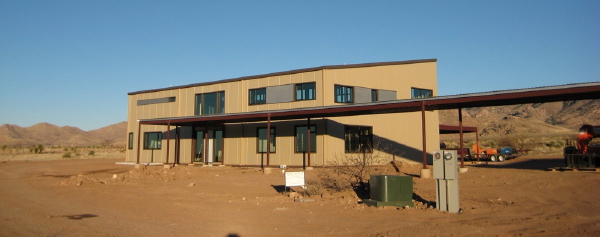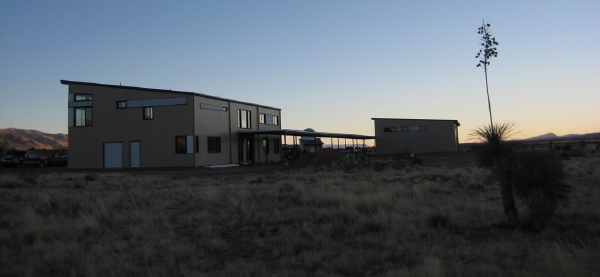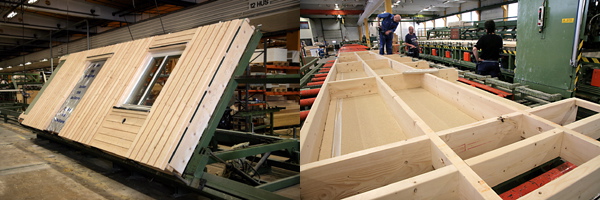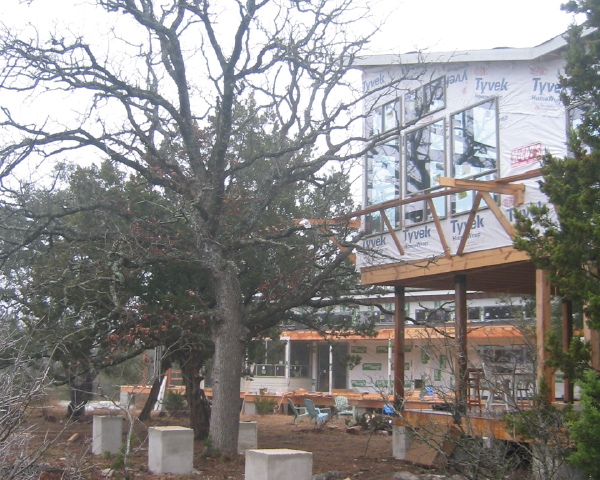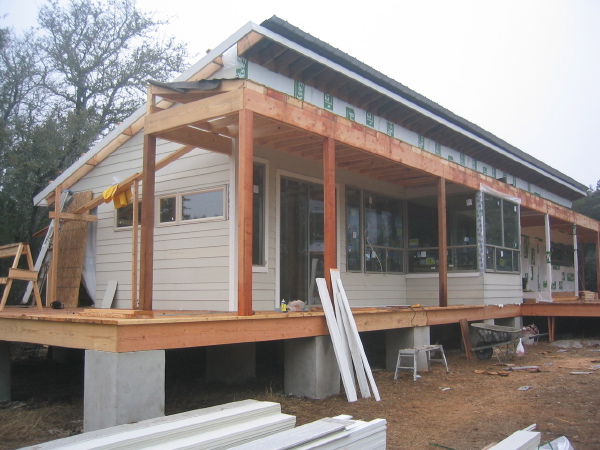We spent well over an hour inside the Alice Ball House yesterday morning, talking to its owner, Cristina Ross. Philip Johnson designed the house in 1953, and we left thinking that it’s nicer and more spacious than it seems from the outside – serene, comfortable and warm, well-proportioned, and beautifully lit with natural light. The Alice Ball House has been the center of a controversy over its future for months now (background is
here and
here); we went to talk to the owner not because we thought we could get to the bottom of anything but rather because we wanted to hear her side of the story, which I think has been lacking from the many newspapers and preservation website accounts (including our own).

Here are my impressions:
Ross bought the house and the property it’s on – 2.2 acres – as an investment, to develop it in a manner consistent with all the other development that has happened recently on Oenoeke Ridge Road – that is, to build the same kind of big house that everyone else has built (like this one, which is next door).
She said that when she was looking to buy, she told her broker “anything but a modern,” fearing that she’d get caught in a vise by preservationists newly aware that modern houses were worthy of protection but that the town of New Canaan was doing next to nothing to protect them. Nevertheless, she bought the Alice Ball House.
She received a variance from the town’s planning and zoning commission to build a new house in the rear portion of the 2.2-acre lot and to make the Alice Ball House a pool house for the new structure, with the condition that she restore the Alice Ball House to its original configuration as Philip Johnson designed it. She agreed.
Throughout the planning and zoning process, a neighbor objected to the plans because the new house Ross wanted to build would be visible from his house; instead, he urged the planning and zoning commission to require Ross to tear down the Alice Ball House and build her new house in its place, away from the part of her property that is nearest his. When the planning and zoning commission declined, he sued and named Cristina Ross in the suit.
With her variance in hand, Ross then asked the town for a permit to build a driveway along what she described as an old farm road, across a wetland, and to the back of her property. After a fairly lengthy review, which included what Ross considered to be a healthy amount of back-and-forth and compromise, the town commission that decides wetlands permits said no. They added, essentially, that if she didn’t like the decision, she could always tear down the Alice Ball House and build her new house there, which would absolve her from having to get a wetlands permit. She then sued to overturn the wetlands decision.
With the variance and the permit up in the air because of the court cases, Ross put the house on the market last year for $3.1 million. In recent months, other modern and contemporary houses have gone on the market in New Canaan and nearby for $2.1 million, $3.3, $2, $3.1, $3.1, $1.8, $2.3, $1.8, and $2.6 million (according to the William Raveis Agency); Johnson’s
Hodgson House, across the road from his
Glass House, went on the market in 2006 for $4.3 million and sold for something close to that; a Marcel Breuer house, on West Road in New Canaan, sold a couple of years ago for just shy of $3 million and is being rebuilt with a new design by Toshiko Mori. So an asking price of $3.1 million for a Philip Johnson house is far from being out of line; and in any case, it’s a free market – she can ask whatever she wants and if no one thinks it’s worth that much, they’ll offer less. Asking for a lot of money for a house in New Canaan isn’t a sign of greed; it’s a sign that you live in New Canaan and you want to cash in on real estate the way everyone else is.

Late last summer, Ross began the process of asking the town for a demolition permit to tear down the Alice Ball House – which, as you’ll remember, is what the wetlands commission suggested she do and what her neighbor is suing the town and her to force her to do. The permit process brought out a large number of preservationists to protest, including representatives of the New Canaan Historical Society and of the National Trust for Historic Preservation/Glass House; the preservationists, Ross says, had previously either ignored or were unhelpful to her efforts to get a wetlands permit. Ross feels that the preservationists unnecessarily turned the process into a confrontation that has led to her being unfairly vilified.
Ross said she thinks it’s unfair and unrealistic to expect one individual to be responsible for the stewardship of a building that some people consider culturally important. Having watched numerous important modern houses in New Canaan get torn down, and others be renovated and expanded with no outcry about the integrity of the original design, I tend to agree with her. Why hold her to a standard that others weren’t held to, particularly when the town government either doesn’t particularly care if these cultural assets are destroyed or, in the case of the wetlands board, is happy to see them destroyed if that’s what it takes to protect a small and (in my opinion) insignificant strip of swamp?
Ross said that last week she met with a handful of people from the National Trust/Glass House and is hoping they can work together to find a buyer for the house.
So that’s where it stands. Ross didn’t answer directly when I asked about specific plans for demolishing the house. Our sense from talking to her is that she clearly doesn’t want to do that but if she’s pushed hard enough and if she’s denied a chance to at least make back her investment, she will. She clearly wants out, and clearly feels as if she’s been treated unfairly by pretty much everyone except perhaps the planning and zoning commission. And it seems as if she is a tiny bit optimistic now that a buyer will come forward and relieve her of her misery.
It’s hard for me to say who is wrong in all this. The answer probably is just about everybody, although in a country and in a town (that is, New Canaan) that prizes real estate values and ownership of private property almost above all else, I’m sympathetic to Cristina Ross. It’s not that I hold real estate value and ownership of private property above all else, or that I think it’s right to do so. But that’s our system, and I think it’s unfair to demonize someone who is playing within the system.
I particularly think it’s unfair and maybe even hypocritical to criticize her when New Canaan has allowed far, far worse affronts to its history and culture. Its lassez-faire attitude toward the destruction of old buildings – farmhouses and barns from the colonial era and the early years of the country as well as mid-century moderns – is scandalous. You occasionally hear New Canaan officials claim that their hands are tied because if they regulate tear-downs they’d be interfering with private property rights and the free market.
That, of course, is baloney. The town already heavily, heavily controls the supply of land and its useability through its zoning regulations. It could do a lot more to protect its cultural heritage, if it wanted to. But it doesn’t want to. Instead it wants to hassle landowners for years under the pretense that it’s doing something constructive. - TA
 On a city rooftop or as a "summerhouse" on the edge of the property, this prefab structure is light-filled and fun. Created by Jun Ueno of Magic Box Inc., the Magic Box takes about a week to put up, after foundation and any other site work is done.
On a city rooftop or as a "summerhouse" on the edge of the property, this prefab structure is light-filled and fun. Created by Jun Ueno of Magic Box Inc., the Magic Box takes about a week to put up, after foundation and any other site work is done. – GF (via inhabitat and MocoLoco)
– GF (via inhabitat and MocoLoco)





